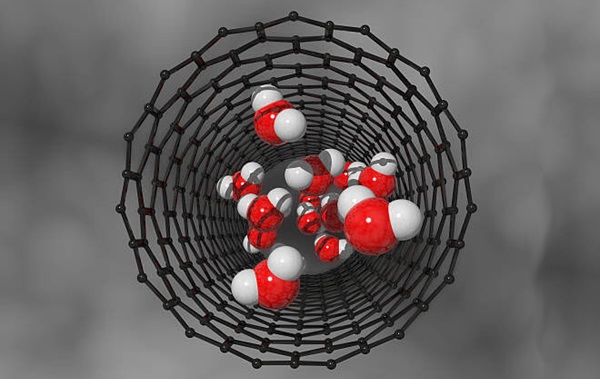Morphometric Analyses of (Hidden) Directional Asymmetry in Leaf Blades
Downloads
The deviation from perfect bilateral symmetry is a phenomenon actively exploring in evolutionary and environmental studies. The bilateral variation presents on different ecosystem level. The methods applied vary depending on the task and the final goal of study. The present study demonstrates the statistically significant presence of components (traces) of directional asymmetry (DA), fluctuating asymmetry (FA) and antisymmetry (AS) in leaf blade of Betula pendula on low level of ecosystem such as tree and leaf blade. The Generalized Procrustes Analysis was applied for testing asymmetry of shape in all data set and subgroups. The category ‘population' revealed no significant value of DA (factor ‘side'). In the levels ‘tree' and ‘leaf blade' the factor ‘side' was statistically significant as well as fluctuating asymmetry (factor interaction ‘leaf í— side').The principal component analysis showed visually the difference in PC scores between antisymmetry matrices of the left and right halves of the leaf blade. Covariate analysis matrices demonstrated the shape deviation from strict symmetry. The metric traits showed directional asymmetry in t-test in the leaf blade and the low kurtosis values. Permutation test of kurtosis values in geometric morphometric approach showed deviation from normality that could verified as a weak presence AS traces. The discriminant analysis results showed that traces of DA differed at the subpopulation level, as three of 10 populations revealed not significant factor ‘side'. Descriptive statistics of the metric train showed a correspondence to the trace of directional asymmetry in the shape of leaf blade. Fluctuating asymmetry in its pure form, at three levels of ecosystem was met only in single population of ten that should be taken into account testing developmental stability of birch and possibly other woody plants.
Downloads
Palmer, A.R.; Strobeck, C. Fluctuating asymmetry analyses revisited. In Developmental Instability: Causes and Consequences; Polak, M., Ed.; Oxford University Press: New York, NY, USA, 2003, pp. 279–319.
Graham, J.H.; Raz, S.; Hel-Or, H.; Nevo, E. Fluctuating Asymmetry: Methods, Theory, and Applications. Symmetry, 2010, 2, 466–540. doi: 10.3390/sym2020466.
Tikhodeyev, O.N. Classification of variability forms based on phenotype determining factors: Traditional views and their revision. Ecological genetics. 2013, 11, 3, 79–92. doi: 10.17816/ecogen11379-92.
Viscosi, V.; Cardini, A. Leaf Morphology, Taxonomy and Geometric Morphometrics: A Simplified Protocol for Beginners. PLoSONE. 2011, 6(10). 25630. doi: 10.1371/journal.pone.0025630.
Savriama, Y.; Gómez, J.M.; Perfectti, F.; Klingenberg, C.P. Geometric morphometrics of corolla shape: dissecting components of symmetric and asymmetric variation in Erysimum mediohispanicum (Brassicaceae). New Phytol, 2012, 196, pp. 945–954. doi: 10.1111/j.1469-8137.2012.04312.x.
Graham, J.H.; Emlen, J.M.; Freeman, D.C.; Leamy, L.J.; Kieser, J. Directional asymmetry and the measurement of developmental instability. Biol. J. Linn. Soc. 1998, 64, 1–16. doi: 10.1111/j.1095-8312.1998.tb01530.x.
Van Dongen, S.; Lens, L.; Molenberghs, G. Mixture analysis of asymmetry: modelling directional asymmetry, antisymmetry and heterogeneity in fluctuating asymmetry. Ecol. Lett. 1999, 2, 387–396. doi: 10.1046/j.1461-0248.1999.00103.x.
Savriama, Y.; Klingenberg, C.P. Beyond bilateral symmetry: geometric morphometric methods for any type of symmetry. BMC Evol. Biol. 2011, 11, p. 280. doi: 10.1186/1471-2148-11-280.
Rohlf, F. J. Shape statistics: Procrustes superimpositions and tangent spaces. J Classif. 1999; 16, 197–223. doi: 10.1007/s003579900054.
Mardia, K.V.; Bookstein F.L.; Moreton, I.J. Statistical assessment of bilateral symmetry of shapes. Biometrika, 2000, pp. 285–300. doi: 10.1093/biomet/87.2.285.
Klingenberg, C.P.; Barluenga, M.; Meyer, A. Shape analysis of symmetric structures: quantifying variation among individuals and asymmetry. Evolution. 2002, 56, 1909–1920. doi: 10.1554/0014-3820(2002)056[1909:SAOSSQ]2.0.CO;2.
Palmer, A.R. Antisymmetry. In Variation: A Central Concept in Biology; Hallgrímsson, B., Hall, B.K., Eds.; Elsevier: Burlington, MA, USA, 2005; pp. 359–397.
Klingenberg, C.P. Analyzing Fluctuating Asymmetry with Geometric Morphometrics: Concepts, Methods, and Applications. Symmetry, 2015, 7843–934. doi: 10.3390/sym7020843.
Silva, Maria Francilene Souza, Ivanilza Moreira De Andrade, and Simon Joseph Mayo. Geometric morphometrics of leaf blade shape in Montrichardia linifera (Araceae) populations from the Rio Parnaíba Delta, north-east Brazil. (2012).
Leamy, Larry J., Eric J. Routman, and James M. Cheverud. An epistatic genetic basis for fluctuating asymmetry of mandible size in mice. Evolution. 2002, 56.3, 642-653. doi: 10.1038/sj.hdy.6800637.
Hochwender, Cris G., and Robert S. Fritz. Fluctuating asymmetry in a Salix hybrid system: the importance of genetic versus environmental causes. Evolution, 1999, 408-416. doi: 10.1111/j.1558-5646.1999.tb03776.x.
Leamy, Larry J., and Christian Peter Klingenberg. The genetics and evolution of fluctuating asymmetry. Annu. Rev. Ecol. Evol. Syst,. 2005, 36 1-21. doi: 10.1146/annurev.ecolsys.36.102003.152640.
Zorina, A. A., and A. V. Korosov. Variability of asymmetry measures and indexes of leaf characters in the crown of Betula pendula (Betulaceae). Botanicheskič Zhurnal, 2009, 94.8 pp.1172-1192.
Baranov S.G. Geometric morphometric methods for Testing Developmental Stability of Betula pendula Roth. Biology Bulletin. 2017, 5. 567-572. doi: 10.1134/S1062359017050041.
Baranov, S.G. Fenogenetic aspect of asymmetry of leaf blade Betula pendula Roth. Nauchnye vedomosti BelGU. Seriya: Estestvennye nauki. 2016, 11(232)32. 10–17.
Vasilyev, A. G., I. A. Vasilyeva, and V. N. Bol'shakov. Evolutionary-Ecological Analysis Of Trends In Phenogenetic Variation Of Homologous Morphological Structures: From Populations To Ecological Series Of Species. Russ J Ecol. 2010, 41.5, 365–371. doi: 10.1134/S1067413610050012.
Stige, L.C.; David, B.; Alibert, P. On hidden heterogeneity in directional asymmetry – can systematic bias be avoided? J Evol Biol. 2006;19, pp.492–499. doi: 10.1111/j.1420-9101.2005.01011.x.
Fair, J.M; Breshears, D.D. Drought stress and fluctuating asymmetry in Quercus undulata leaves: confounding effects of absolute and relative amounts of stress? J Arid Enviro. 2005, 62, 2, 235–249. doi: 10.1016/j.jaridenv.2004.11.010.
Fei, Xu; Weihua, Guo; Weihong, Xu; Renqing, Wang. Habitat effects on leaf morphological plasticity in Quercus acutissima. Acta Biologica Cracoviensia Series Botanica. 2008; 50/2, 19–26.
Kozlov, M.V. Plant studies on fluctuating asymmetry in Russia: Mythology and methodology. Russ J Ecol. 2017, 48: 1. doi: 10.1134/S1067413617010106.
Bol'shakov, V.N.; Vasil'ev, A.G.; Vasil'eva, I.A.; Gorodilova, Y.V.; Chibiryak, M.V. Coupled biotopic variation in populations of sympatric rodent species in the Southern Urals. Russ J Ecol. 2015, 1, 46(4):339–44. doi: 10.1134/S1067413615040037.
Voita, L.L.; Omelko, V.E.; Petroava, E.A. Analysis of the morphometrics variability and intraspecific structure of Sorex Minutissimus Zimmermann, 1780 (Lipotyphla: Soricidae) In Russia. Acta Theriol. 2013, 8, 167-179, doi:10.4098/at.arch.64–10.
Erofeeva, Elena A. Hormesis and Paradoxical Effects of Drooping Birch (Betula pendula Roth) Parameters under Motor Traffic Pollution. Dose-Respons, 2015, 13.2, https://doi:10.1177/1559325815588508.
Klingenberg C. P. Developmental instability as a research tool: using patterns of fluctuating asymmetry to infer the developmental origins of morphological integration //Developmental instability: causes and consequences. – 2003. – С.427-442.
Tucič, Branka, Sanja Budečevič, Sanja Manitaševič Jovanovič, Ana Vuleta, and Christian Peter Klingenberg. "Phenotypic Plasticity in Response to Environmental Heterogeneity Contributes to Fluctuating Asymmetry in Plants: First Empirical Evidence.” Journal of Evolutionary Biology 31, no. 2 (November 28, 2017): 197–210. doi:10.1111/jeb.13207.
Berger, Brent A., Vincent A. Ricigliano, Yoland Savriama, Aedric Lim, Veronica Thompson, and Dianella G. Howarth. "Geometric Morphometrics Reveals Shifts in Flower Shape Symmetry and Size Following Gene Knockdown of CYCLOIDEA and ANTHOCYANIDIN SYNTHASE.” BMC Plant Biology 17, no. 1 (November 17, 2017). doi: 10.1186/s12870-017-1152-x.
Viscosi, Vincenzo, Gaby Antonecchia, Olivier Lepais, Paola Fortini, Sophie Gerber, and Anna Loy. "Leaf shape and size differentiation in white oaks: assessment of allometric relationships among three sympatric species and their hybrids." International Journal of Plant Sciences 173, no. 8 (2012): 875-884.
Koroteeva, E.V.; Veselkin, D.V.; Kuyantseva, N.B.; Chashchina, O.E. The size, but not the fluctuating asymmetry of the leaf, of silver birch changes under the gradient influence of emissions of the Karabash Copper Smelter Plant. In Doklady Biological Sciences. 2015, 460, 1, 36). Springer Science & Business Media. doi: 10.1134/S0012496615010056.
Kozlov, Mikhail V.; Cornelissen, Tatiana; Gavrikov, Dmitry, E.; Kunavin, Mikhail A.; Ang, Dawa Lama; Milligan, Jennifer R.; Zverev Vitali; Zvereva, Elena L. Reproducibility of fluctuating asymmetry measurements in plants: Sources of variation and implications for study design. Ecological Indicators. 2017, 73, 733–740. doi: 10.1016/j.ecolind.2016.10.033.
Van Dongen, Stefan. Variation in Measurement Error in Asymmetry Studies: A New Model, Simulations and Application. Symmetry. 2015, 7.2, 284–293. doi: 10.3390/sym7020284
Kryazheva, N.G.; Chistyakova, E.K., and Zakharov, V.M., Analysis of development stability of Betula pendula under conditions of chemical pollution, Russ. J. Ecol. 1996, 27, 6, pp. 422–424.
Ivanov, V.P; Ivanov, Y.V.; Marchenko, S.I.; Kuznetsov, V.V. Application of fluctuating asymmetry indexes of silver birch leaves for diagnostics of plant communities under technogenic pollution. Russian Journal of Plant Physiology. 2015, 1, 62(3):340–348. doi: 10.1134/S1021443715030085
Gelashvili, D. B.; E. V. Cheprunov, and D. I. Iudin. Structural and bioindicative aspects of fluctuated asymmetry of bilateral organisms. Zhurnal obshchei biologii. 2003. 65.5 433-441.
Rohlf, F.J. Tps Series. Department of Ecology and Evolution, State University of New York, Stony Brook, New York. 2010. Available: http://life.bio.sunysb.edu/morph/.
Rohlf, F. James. The tps series of software. Hystrix, the Italian Journal of Mammalogy 26.1 (2015): 9-12.
Klingenberg, C. P. MorphoJ: an integrated software package for geometric morphometrics. Molecular Ecology Resources. 2011, 11. 353-357. doi: 10.1111/j.1755-0998.2010.02924.x
Breuker, C. J.; Patterson, J. S.; Klingenberg, C. P. A single basis for developmental buffering of Drosophila wing shape. PLoS ONE 2006, 1(1): e7. doi: 10.1371/journal.pone.0000007
Vasil'ev, A. G.; I. A. Vasil'eva, and Yu F. Marin. Phenogenetic monitoring of the weeping birch (Betula pendula Roth.) in the Middle Urals: testing a new method for assessing developmental instability in higher plants. Russian Journal of Ecology. 2008, 39.7. 483-489. doi: 10.1134/S1067413608070047
Franiel, I. Fluctuating asymmetry of Betula pendula Roth. leaves – an index of environment quality. Biodiv. Res. Conserv. 2008, 9-10.
Van Dongen, S. Unbiased estimation of individual asymmetry. Journal of Evolutionary Biology 2000, 13.1. 107-112. doi: 10.1046/j.1420-9101.2000.00147 x.
- This work (including HTML and PDF Files) is licensed under a Creative Commons Attribution 4.0 International License.



















